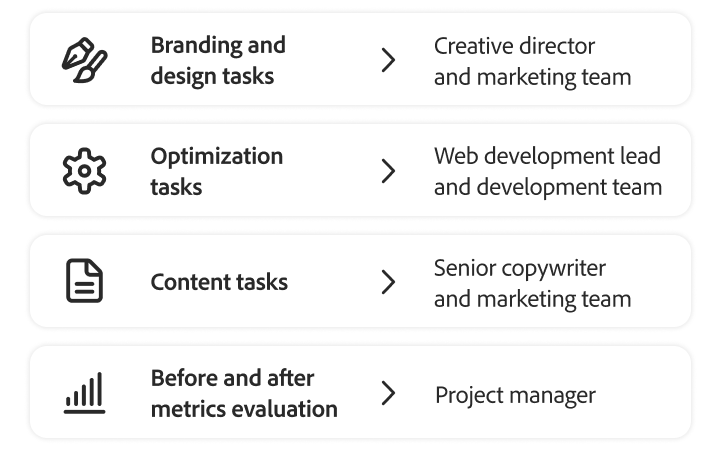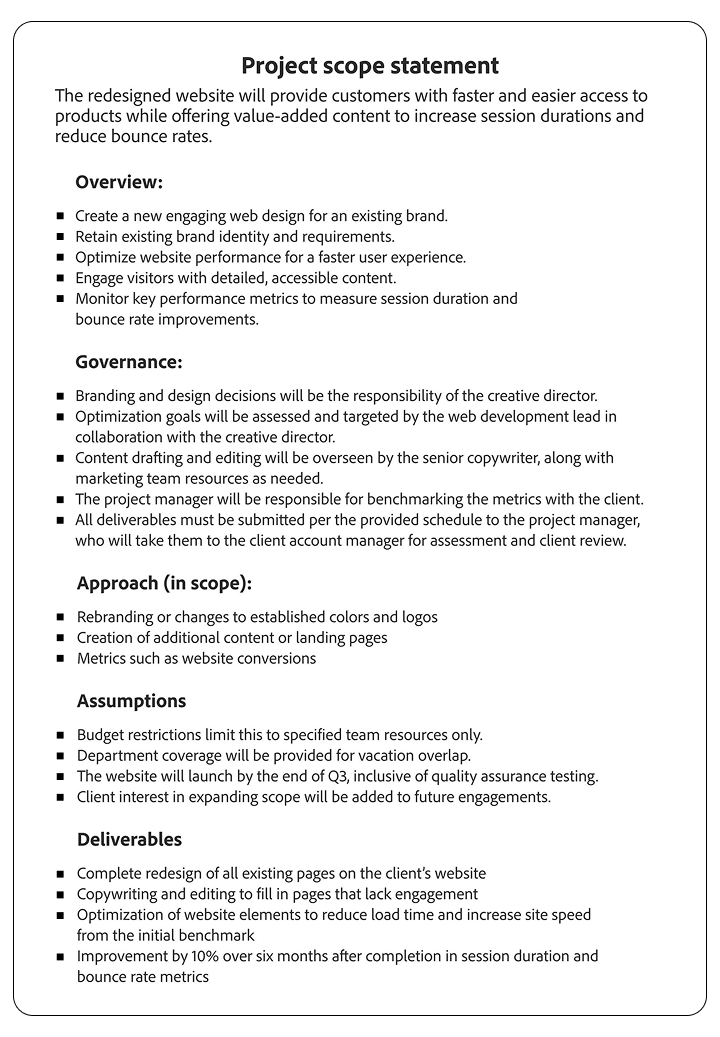Now that you understand how a project scope statement helps avoid pitfalls and misunderstandings, you may want to create one for yourself. Even if you’ve never made a project scope statement before, there’s no reason to feel overwhelmed. These documents can be easy to put together once the key elements to include are defined.
Of course, no two projects are the same, so project managers should expect variations in what might be applicable when getting started. Keep in mind that these documents are designed to clearly define deliverables and expectations in a way that’s both actionable and achievable. When crafting a project scope statement, consider the following:
1. Overview — providing a synopsis
Starting with a summary of the project can help everyone understand what is needed from them and what is expected in the end. This can also be an excellent opportunity to outline objectives for smaller milestones that lead to broader goals in a clear and actionable way.
Project needs are often itemized here to outline what should be included and what should be left out. Project managers can use this section to define the objectives and goals, and create a clear, one-sentence statement that outlines the initiative's purpose.
Let’s take the example of a company working on a website redesign for an ecommerce client. A sample project scope statement could be “The redesigned website will provide customers with faster and easier access to products while offering value-added content to increase session duration and reduce bounce rate.”
From here, the project’s detailed objectives could include the following:
- Create a new, engaging web design for an existing brand.
- Retain existing brand identity and requirements.
- Optimize website performance for a better user experience.
- Engage visitors with detailed, accessible content.
- Monitor key performance metrics to measure session duration and bounce rate.
2. Governance — attributing responsibility.
With the general concept established, stakeholders and individual contributors can be assigned to specific roles. This step outlines who will be working on the project and who will be responsible for reviewing and approving various deliverables.
Consider each objective outlined in the overview. The project manager should indicate who is involved with or accountable for each at a high level. Let’s use our previous example of the website redesign:
3. Approach — outlining steps
For everyone to contribute effectively to the plan, they’ll need to know their exact responsibilities and tasks, as well as their significance in the bigger picture. Reiterate the project scope statement and then outline what is and is not included in the scope. It can be helpful to redefine the measures of success to align tasks within or outside the scope itself.
In the case of the website redesign project, the approach could include reminders for the creative team to use the existing brand guidelines and confine their efforts to working within those boundaries. While a new website is in scope, a rebrand is not.
Another point of clarification could be around the measures for success. The project manager could define that while improving traffic figures is crucial, increasing the total number of sales for the client is outside the scope of this project.
4. Assumptions — expected risks and rewards
Every good project manager knows projects are bound to encounter obstacles. To help alleviate challenges, incorporate predictions of what is likely to sidetrack progress and provide recommendations on how to avoid these issues.
These considerations could range from allocating the right resources to the project to ensure no one is shorthanded to reviewing PTO requests to maintain continuous coverage. Risk factors could include anything from personnel availability to the budget set forth by a client. To prevent conflict before it arises, clearly indicate any potential risks to the team and external clients.
5. Deliverables — defining success
Clearly defining the deliverables can help reiterate the overall definition of project success. Return to the original project scope statement and evaluate what can be used objectively and measurably demonstrate a job well done.
For example, the project manager could address this from several angles. When it comes to key performance indicators (KPIs), they can work with the client to establish baselines for session duration and bounce rate, determining what improvements will define success over a set period after the new website is launched. They can also work with the internal team to define the parameters for what a thorough, on-brand redesign entails and how different the website should ultimately look.




